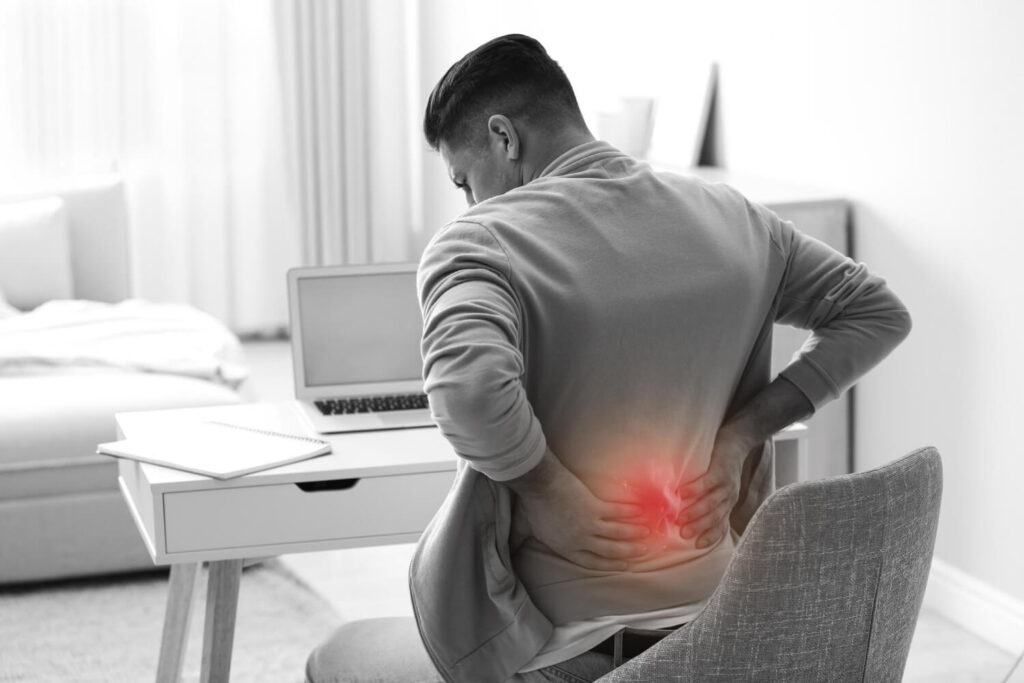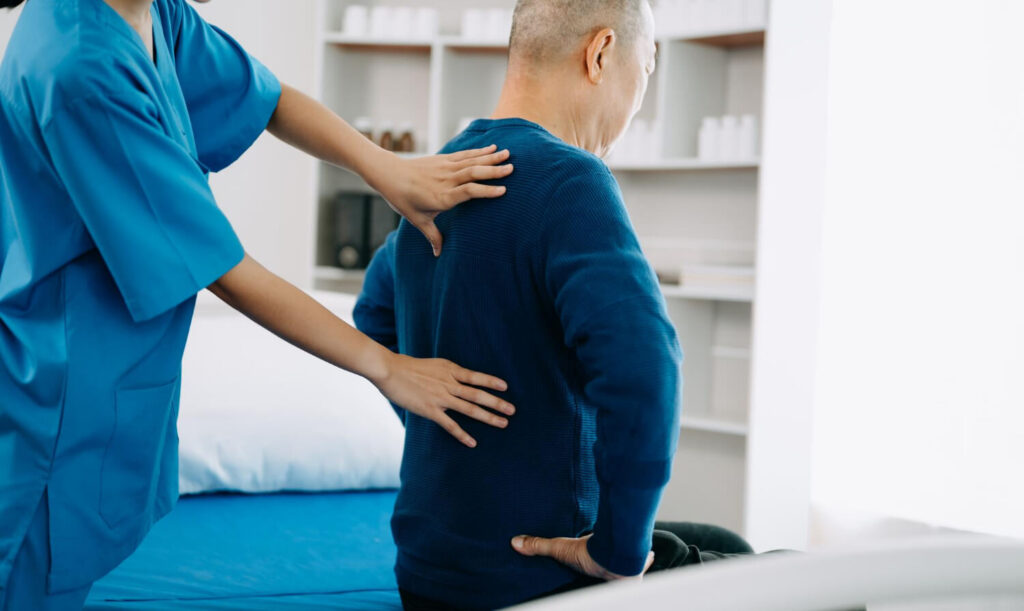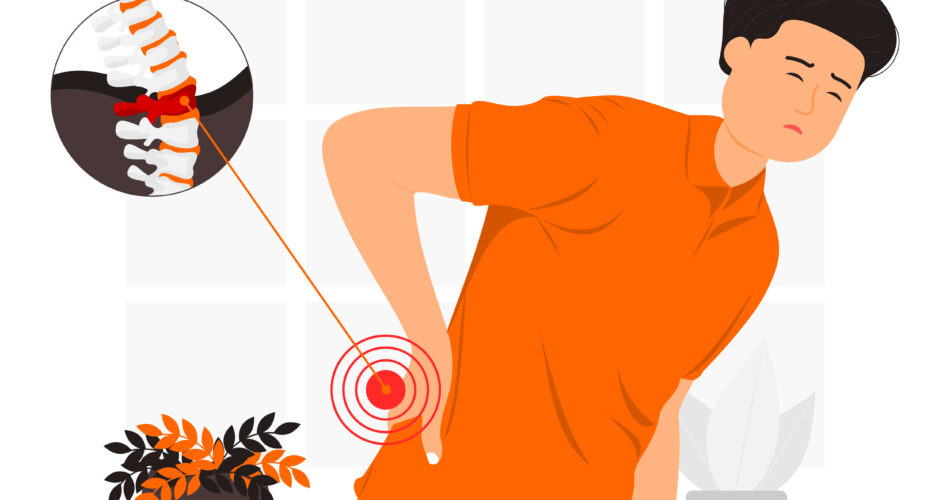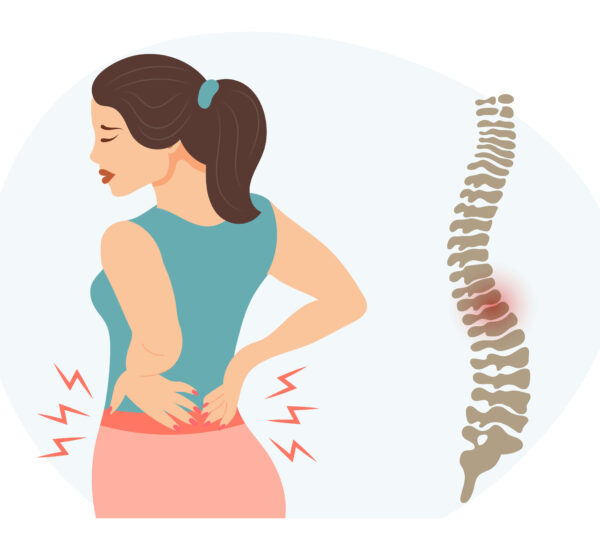At a certain point of one’s life, people tend to develop this back pain due to many factors. That’s because, this condition is considered one of the most common illnesses associated with posture, aging, and strenuous activities. Those factors are just some of the common causes why an individual can develop back pain.
So, if you are involved in any of those factors, then it’s no surprise you have back pain. Although, self-diagnosis is not ideal for patients. If you suspect that your condition is related with back pain, then this blog is for you. Learn about the symptoms and how to alleviate pain with the discussion below!
What is Back Pain

Back pain refers to discomfort or pain felt in the back, specifically in the area of the spine. It can occur in any part of the spine, but the lower back is the most commonly affected area. This discomfort can range from mild to severe. Thus, making it essential to pay attention to any persistent discomfort in the back.
Common Symptoms
This condition can manifest in various ways, and the severity of symptoms can vary from person to person. Common symptoms associated with back pain include:
- Lower back pain: This is the most prevalent symptom of back pain and is often described as a dull ache or sharp pain in the lower back region. It can be localized or radiate to other areas, such as the hips or legs.
- Muscle spasms: Patients can also experience involuntary muscle contractions or spasms, which can worsen the pain and limit mobility.
- Limited mobility: Back pain can make it difficult to perform certain movements or activities, such as bending, lifting, or standing for extended periods.
- Chronic low back pain: If the pain persists for more than three months, it is classified as chronic low back pain. This type of pain can significantly impact a person’s daily activities and quality of life.
- Severe pain: In some cases, back pain can be severe and debilitating, making it challenging to perform even simple tasks.
It is important to note that the presence of these symptoms does not automatically indicate a serious underlying condition. However, if the pain is severe, persistent, or accompanied by other concerning symptoms, it is advisable to seek medical attention for further evaluation and appropriate management.
Causes Behind Back Pain
As mentioned, the condition can be caused by various factors. These factors can range from physical strain and injury to underlying health conditions. Thus, disrupting daily life due to various threats.
Here are some of the common causes:

Physical strain and injury
First in the list is physical strain and injury. It commonly occurs when an individual tries to use their strength by doing strenuous activities. For instance, doing heavy lifting activities without proper stretching can lead to strain and injury. Sudden movements can strain the muscles and ligaments in the back. That’s because the body should be in good condition first, before doing such strenuous activities. Thus, helping to prevent injury or strain at the back.
Structural problems in the spine
Meanwhile, another possible contributing factor is when an individual has structural problems in the spine. This involves conditions like herniated disk, degenerative disk disease, and spinal stenosis. The common denominator among these conditions is it can put pressure on the spinal cord or nerves, causing back pain. Thus, affecting the posture and mobility of patients.
Other Health Conditions
Aside from the conditions involving the spine, other health conditions can also contribute to back pain. Certain medical conditions, such as kidney stones or chronic pain conditions, can result in back pain. Treating the underlying condition can help alleviate the associated back pain.
It is important to consult with a healthcare provider to determine the specific cause and develop an appropriate treatment plan. With proper diagnosis and treatment, individuals can find relief from their and improve their overall well-being.
Recognizing Serious Complications for Medical Emergency
Suffering from this condition can be a slow process of torture for some people. The pain caused by this condition can be alarming, especially if simple mobility actions can aggravate the condition. If that happens, then it might be time to seek an expert’s help, especially if it now limits your normal activities.
Some of the symptoms that you need to monitor:
- severe pain that does not respond to rest or medication
- pain that radiates down the leg or affects bowel or bladder function
- presence of weakness, numbness, or tingling in the legs
Other symptoms that warrant urgent attention include loss of bowel or bladder control, weakness or numbness in the legs, and difficulty standing or walking.
If you experience any of these symptoms, it is important to seek medical help immediately. A healthcare provider can perform a thorough evaluation and recommend appropriate treatment options. Make sure to relay every possible symptom you’ve experienced to prevent further complications.

Comprehensive Diagnosis Approaches
Once you’ve decided to consult a doctor about your back pain concerns, there are several aspects you might want to be ready for. That includes procedures and assessments that the doctor might recommend from you. These tests are vital to help with the proper diagnosis of your condition.
At the same time, the doctor will also check your medical history if there are recurring conditions that might have caused the back pain. For instance, UTI and kidney stones are known for contributing to back pain. So, if you have a history of these conditions, there’s a chance you have recurring conditions.
Although, do take note that everything will still be verified through the results of the tests. Here are the diagnostic tools and tests that the doctor will request for your assessment:
- X-rays
- CT scans
- MRI
- blood test
- urine test
Furthermore, the healthcare provider may also conduct a physical exam to assess your range of motion, muscle strength, and any areas of tenderness or inflammation. These comprehensive assessments will help determine the most appropriate diagnostic tools and tests to further evaluate your back pain and guide your treatment plan.
Treatment Options for Back Pain
After the thorough assessment and analyzing of the results, the doctor will derive a tailored treatment plan to address the back pain and other concerns that the patient has. The treatment options for back pain can either be composed of a non-surgical approach or surgical intervention.
Here are the treatment options for back pain:
Non-Surgical Treatments and Therapies
The first in line for back pain treatment is the non-surgical type. Doctors commonly utilize it first as it can be an effective form of treatment without resorting to an invasive approach.

Some of the common treatment involved in this category are the following:
- Physical Therapy – It plays a crucial role in managing back pain by improving flexibility, strengthening the muscles that support the spine, and teaching proper body mechanics to prevent further injury
- Pain Medication – Pain relievers like nonsteroidal anti-inflammatory drugs (NSAIDs) or acetaminophen, can help pain and inflammation.
- Muscle Relaxants – Commonly prescribed to relieve muscle spasms and improve comfort.
- Cortisone Injections – Form of medication that can provide targeted relief by reducing inflammation in the affected area.
Other therapies such as heat or cold therapy, massage, and acupuncture may also offer relief.
It is important to work with your healthcare provider to determine the most appropriate treatment options for your specific condition and to follow their recommendations for the recommended dose and duration of treatment.
Surgical Interventions for Severe Cases
If all the non-medication treatment options won’t work, it might be time to use a more invasive approach for alleviating back pain. Surgical options for back pain include procedures to address specific conditions such as herniated discs or spinal stenosis.
Some of the known surgical procedures may include the following:
- Discectomy – performed to remove a herniated disc that is pressing on a nerve and causing pain
- Spinal fusion surgery – recommended to stabilize the spine in cases of severe degenerative disc disease or spinal instability.
Your healthcare provider will discuss the potential risks and benefits of surgery with you and help determine the most appropriate surgical intervention for your specific condition.
Home Remedies and Lifestyle Changes
In addition to medical treatments, there are several home remedies and lifestyle changes that can help alleviate back pain. These include practices that can be beneficial for back conditioning. At the same time, these remedies can help patients to have better posture. Let’s discuss them below!
Effective Exercises for Strengthening the Back
There are several physical activities that can help with your back problem. These activities like exercises don’t only help with alleviating the pain, but also prevent future episodes of back pain. It involves exercises that focus on abdominal muscles and back muscles, which can provide support and stability to the spine.

Here are some of the exercises you can try:
- planks
- bridges
- bird dogs
- yoga
It is important to start slowly and gradually increase the intensity and duration of the exercises. If you are unsure about the appropriate exercises or technique, consulting with a physical therapist or certified fitness professional can provide guidance and ensure that you are performing the exercises correctly and safely.
Nutritional Support and Hydration
On the other hand, another home remedy option for dealing with back pain can involve a proper diet and nutrition planning. Maintaining a healthy weight and proper nutrition can support the health of your spinal column and reduce the risk of back pain. That’s why a well-balanced diet rich in fruits, vegetables, lean proteins, and whole grains are vital to support the health of your bones and muscles.
Additionally, staying hydrated is important for maintaining the elasticity of the spinal discs, which act as shock absorbers. At the same time, proper hydration can help prevent dehydration and promote the optimal functioning of the spine.
Remember to drink an adequate amount of water throughout the day and limit the consumption of sugary beverages.
Importance of Posture and Ergonomics
On the other hand, back pain patients commonly develop the condition due to poor posture. Maintaining a good posture and practicing proper ergonomics in everyday activities can help prevent the development of the condition. So, it is important to avoid slouching or hunching over as it can strain the muscles and ligaments in the back. When sitting or standing, try to avoid prolonged sitting or standing in one position and take regular breaks to stretch and move.
Furthermore, in terms of lifting heavy objects, try to use proper body mechanics by bending your knees and lifting with your legs rather than your back. Pay attention to your posture while performing such activities, and it can help you prevent straining your back muscles and spine.
Conclusion
There are several reasons why people develop back pain. Even with the normal activities that you do, it can possibly strain the spin and back muscles if you are not careful. That’s why it is important to always be cautious to prevent its occurrence.
However, if you have developed back pain, and alarming symptoms are present, there’s only one thing to do. That is to entrust your health to a healthcare expert for a proper diagnosis and receiving of treatment options.
Remember, your spine is vital for your mobility so it is important to take good care of your health. Book an online consultation or visit an orthopedic doctor for a health check up for your back pain today!


